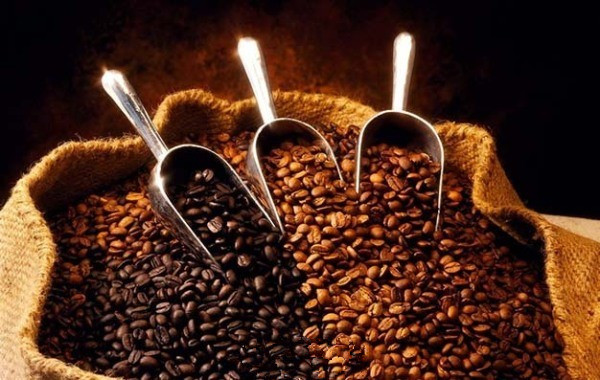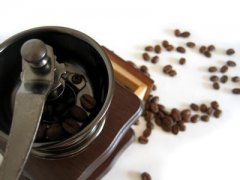Why do coffee beans need to be roasted?
Why do coffee beans need to be roasted?
Coffee will be addicted to love, the key lies in the formation of the aroma after baking and the taste of drinking. The taste of raw coffee beans is described as the smell of soil or grass, but baking is like magic, which completely changes and reorganizes the internal substances of raw coffee beans to form a new structure and form a strong fragrant flavor. It can be seen that roasting shapes the soul of coffee.

What is the common way of baking?
The roaster is mainly divided into three types: direct fire type, semi-hot air direct fire type and hot air type.
1. Direct fire type
Direct fire is the earliest baking tool, that is, raw beans are roasted in a hot drum and then transferred to the cylinder. The continuous running drum of the built-in motor stirs the coffee beans in the drum, trying to make each coffee bean come into contact with the hot iron evenly to achieve the goal of balanced roasting.
Error and fallacy:
The thermal conductivity of ● metal is not fast enough, and it takes more time to complete baking.
What are the utensils of each baking system?
● burns the outside of the drum; however, the heat disappears in the air, and it is a pity that it cannot be operated well.
● when raw beans touch the inner wall of the drum for too long, it is easily scorched, resulting in bitterness and scorching taste.
The silver film or silver skin that occurs during ● baking will be left in the tube, easily attached to the profile of coffee beans, making the flavor cloudy.
Between 1870 and 1920, the German Fan Guban VanGulpen devoted himself to the improvement and manufacture of drum roasters, which also left a lot of ideas to posterity, in one of his discoveries, he promoted coffee beans that had been brought into baking with hot air.
The Perfekt roaster made in Germany in 1907 began to introduce this unbeautiful concept. In addition to using gas for heating action, there is an air pump that brings half of the hot air into the drum and the other half to the outer barbecue drum. At present, the roller baking in Germany still has certain comments in the corner of the industry.
On the other hand, the German Boroba Probat drum roaster can be said to be spread to the baking industry of other countries.
Generally speaking, roasters use gas or electricity as a heat source, but Derek Diedrich, of Idaho, Idaho, took the lead in using gas-activated infrared heat source Gas-Infrared in 1987 to make temperature control, more accurate, well received and become the number one brand in North America.
Today's drum roaster; almost all use semi-hot air direct fire type, on the one hand directly barbecue hot drum with fire source, on the other hand bring hot air into the drum, blow into the hot air in the drum, can promote the heating speed, but also blow away the debris, but also can produce balanced and clean coffee beans.
However, because of the differences in the structural design of each family, and each boasts the best design, in fact, the most important thing to appreciate the roasting process of coffee is that the roaster of different factory brands will not cause much difference.
3. Hot air type
two。 Semi-hot air direct fire type
In the 20th century, some people thought of the way of roasting coffee beans with hot air. In addition to the lack of iron barrier in roasting coffee beans, the heat source can be passed directly to raw beans to improve baking efficiency.
The Thermonro roaster JadezBurnsThermalo made by Burns Company in the United States in 1934 is a kind of hot air type machine. There are still some large baking plants in the United States and are still using this kind of roaster.
In addition, the wind bed roaster Fluid-BedRoaster can still be seen in the market. Here can be briefly introduced: the structure of the hot air baking machine still adopts the drum design; the raw beans are turned by rolling to achieve balanced baking. However, some people have long thought about why not use hot air to move the raw beans; let the beans float up and down and cancel the concept of the drum.
It was the American Michael in 1976. Schweitz MichaelSivetz designed the air bed roaster Fluid-BedRoaste, which allows air to blow up and down in an airtight container, allowing raw beans to float up and down in the container, and then pour into the cooling tray outside the container until the baking is finished. Michael is often found on the website of the selected Coffee Association of the United States. Schweizi's comments.
There is also a similar design and agency baking style in Australia; RollerRoaster, a roaster created by Iomberstein IanBersten in Australia and marketed, is also well known. In the general baking process, the water in the beans is evaporated less and less, and the quality becomes lighter and lighter, so the weight of the roaster will fall more quickly, and take over the baking of the hot air again, so that it can bake the average coffee beans again and again, but without the smoldering of the metal drum, some people will think that there is always one less flavor.
Important Notice :
前街咖啡 FrontStreet Coffee has moved to new addredd:
FrontStreet Coffee Address: 315,Donghua East Road,GuangZhou
Tel:020 38364473
- Prev

Preservation of Roasted Coffee Beans
The retention of coffee beans is one of the limiting factors in the taste of a cup of coffee.
- Next

The technology of stir-frying coffee beans
1. Clean up 2. Before roasting, different varieties of coffee are blended, by filling different varieties and producing areas of coffee, all kinds of spray aroma and ingredients are combined to make the coffee have a specific spray flavor and ensure the consistency of coffee quality. In order to find coffee suitable for different imported stomachs, coffee can be intervened in a certain proportion according to its origin in order to get the best.
Related
- Guji coffee producing area of Guji, Ethiopia: Humbela, Shakiso, Wulaga
- What is the most expensive variety of Qiloso in BOP multi-variety group?
- How to store the coffee beans bought home?
- Why are Yemeni coffee beans so rare now?
- Ethiopian Sidamo all Red Fruit Sun Sun Santa Vini Coffee beans
- SOE is mostly sour? What does it mean? Is it a single bean? what's the difference between it and Italian blending?
- Is Italian coffee beans suitable for making hand-brewed coffee?
- How to choose coffee beans when making cold coffee? What kind of coffee beans are suitable for making cold coffee?
- Just entered the pit to make coffee, what kind of coffee beans should be chosen?
- Can only Japan buy real Blue Mountain Coffee? What are authentic Jamaican Blue Mountain coffee beans?

